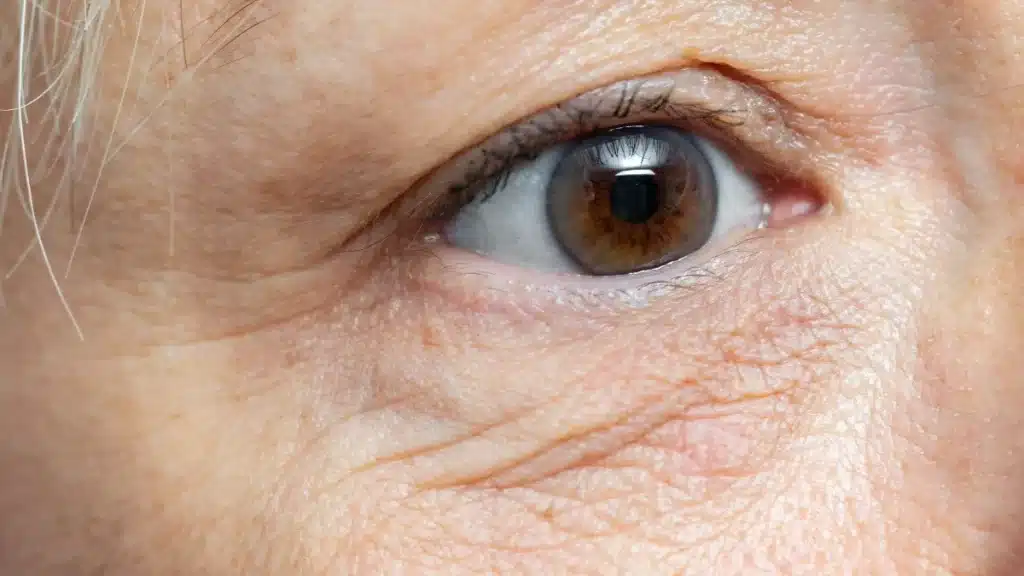Eye Care
All About Under Eye Concerns: Puffiness, Dark Circles, and Wrinkles
Under Eye Concerns is a common aesthetic issue that many individuals face, irrespective of age, gender, or ethnicity. The delicate skin surrounding the eyes is particularly prone to a variety of issues, ranging from dark circles and puffiness to fine lines and wrinkles. These concerns can stem from a multitude of factors, including genetics, lifestyle habits, environmental stressors, and the natural aging process. Regardless of their origins, Under Eye Dark circles can often impact one’s self-confidence and overall appearance, prompting individuals to seek out solutions to address them. From skincare routines and dietary adjustments to cosmetic procedures and lifestyle changes, there exists a plethora of approaches aimed at minimizing under-eye concerns and restoring a youthful, revitalized appearance.
Causes of puffiness and how to reduce it
Under Eye Puffiness, often called under-eye bags, can be caused by various factors. Understanding these causes is essential in devising effective strategies to reduce puffiness. Here’s a detailed look at some common causes and methods to reduce under-eye puffiness:
- Fluid Retention: Fluid buildup in the tissues around the eyes is a primary cause of puffiness. This can be due to factors such as excessive salt intake, dehydration, hormonal changes, or even allergies.
-
-
- Reduce Salt Intake: Consuming high amounts of salt can lead to water retention, exacerbating under-eye puffiness. Limiting salt intake in your diet can help reduce fluid retention.
- Stay Hydrated: Stay hydrated by ensuring you drink enough water throughout the day. Proper hydration can prevent fluid retention and promote overall skin health.
-
- Allergies: Allergic reactions can cause inflammation and swelling around the eyes, leading to puffiness. Common allergens comprise pollen, pet dander, dust mites, and specific foods.
-
-
- Identify and Avoid Allergens: Determine potential allergens that trigger puffiness and take steps to minimize exposure. This may involve using allergy-proof bedding, avoiding certain foods, or using air purifiers.
- Antihistamines: Over-the-counter or prescription antihistamines can help alleviate allergic reactions and reduce under-eye puffiness caused by allergies.
-
- Sleep Deprivation: Lack of sleep can contribute to fluid retention and blood vessel dilation, leading to puffiness and dark circles under the eyes.
-
- Prioritize Quality Sleep: Make quality sleep a priority by aiming for 7-9 hours of uninterrupted rest each night. Establish a calming bedtime routine and set up a sleep-friendly environment.
- Elevate Your Head: Sleeping slightly elevated can prevent fluid accumulation around the eyes. Consider using an additional pillow to raise your head while sleeping.
- Age-related Changes: As we age, the skin around the eyes loses elasticity and collagen, making it more prone to puffiness and sagging.
-
-
- Topical Treatments: Incorporate skincare products containing ingredients like retinol, peptides, and hyaluronic acid to improve skin elasticity and reduce puffiness.
- Cold Compresses: Applying cold compresses or chilled cucumber slices to the eyes can constrict blood vessels, reduce inflammation, and temporarily alleviate puffiness.
-
- Poor Circulation: Reduced blood flow around the eyes can lead to fluid accumulation and puffiness.
-
- Gentle Massage: Lightly massaging the under-eye area can stimulate circulation and help drain excess fluid, reducing puffiness.
- Eye Creams with Caffeine: Caffeine products can help constrict blood vessels and reduce puffiness by improving circulation around the eyes.
In addition to these strategies, maintaining a healthy lifestyle, avoiding smoking, and protecting the delicate skin around the eyes from sun damage can also contribute to reducing under-eye puffiness over time. However, if puffiness persists despite these measures or is accompanied by other concerning symptoms, it’s advisable to consult a dermatologist or healthcare professional for further evaluation and personalized treatment recommendations.
Tips for minimizing Under Eye Dark circles
Under Eye Dark circles can be frustrating, but there are several strategies you can implement to minimize their appearance. Here are some tips:
- Get Sufficient Sleep: Lack of sleep can exacerbate under-eye dark circles by making the skin appear paler and more transparent. Strive for 7-9 hours of restful sleep each night to facilitate skin rejuvenation.
- Hydrate: Dehydration can make dark circles more prominent. Stay hydrated by drinking ample water throughout the day to maintain skin hydration and suppleness.
- Protect Your Skin from the Sun: Sun exposure can increase melanin production, leading to darker under-eye circles. Wear sunscreen and sunglasses when outdoors, and consider using an eye cream with SPF protection.
- Use Cold Compresses: Applying cold compresses or chilled cucumber slices to the under-eye area can constrict blood vessels, reduce inflammation, and temporarily lighten dark circles.
- Topical Treatments: Look for eye creams or serums containing ingredients like vitamin C, retinol, hyaluronic acid, and kojic acid. These ingredients can help brighten the skin, improve collagen production, and reduce the appearance of dark circles over time.
- Get Allergy Relief: Allergies can contribute to under-eye dark circles by causing inflammation and congestion. Identify and avoid allergens, and consider using over-the-counter or prescription antihistamines to alleviate symptoms.
- Healthy Diet: Incorporate foods rich in antioxidants, vitamins, and minerals into your diet to promote skin health. Include plenty of fruits, vegetables, lean proteins, and omega-3 fatty acids.
- Manage Stress: Chronic stress can worsen under-eye dark circles by increasing cortisol levels and disrupting sleep patterns. Incorporate stress-reduction practices into your routine, such as meditation, yoga, deep breathing exercises, or engaging in enjoyable hobbies.
- Concealers and Color Correctors: Use a concealer or color corrector specifically formulated for dark circles to camouflage their appearance. Choose a shade that matches your skin tone and apply it sparingly, blending gently with your fingertips or a makeup sponge.
- Limit Eye Strain: Excessive screen time and eye strain can contribute to fatigue and exacerbate dark circles. Take regular breaks from electronic devices, practice the 20-20-20 rule (every 20 minutes, look at something 20 feet away for 20 seconds), and ensure proper lighting when reading or working.
Consistency is key when it comes to managing under-eye dark circles. Incorporate these tips into your daily routine and be patient, as it may take some time to see noticeable improvements. If dark circles persist despite your efforts, consult a dermatologist or healthcare professional for further evaluation and treatment options.
Prevention methods for Under Eye Wrinkles
Under-eyes wrinkle, also known as crow’s feet or periorbital wrinkles, refer to the fine lines, creases, and folds that develop in the delicate skin surrounding the eyes. These wrinkles typically appear as a natural part of the aging process but can also be influenced by various factors such as genetics, sun exposure, repetitive facial expressions, and lifestyle habits.
Preventing Under Eye Wrinkles involves a combination of lifestyle changes, skincare practices, and protective measures. Here are some effective tips to minimize the development of under-eye wrinkles:
- Sun Protection: UV radiation is one of the primary causes of premature skin aging, including the formation of wrinkles. Always apply a broad-spectrum sunscreen with SPF 30 or higher to the under-eye area, even on cloudy days. Additionally, wear sunglasses with UV protection to shield the delicate skin from sun damage.
- Hydration: Proper hydration is crucial for maintaining skin elasticity and preventing dehydration-related wrinkles. Drink an adequate amount of water throughout the day to keep your skin hydrated from within.
- Healthy Diet: Consume a balanced diet rich in fruits, vegetables, lean proteins, and healthy fats. Antioxidant-rich foods such as berries, leafy greens, and nuts help combat free radical damage and promote skin health.
- Gentle Skincare: Use gentle skincare products specifically formulated for the delicate under-eye area. Avoid harsh or abrasive ingredients that can cause irritation or damage to the skin. Look for eye creams or serums containing ingredients like retinol, peptides, vitamin C, and hyaluronic acid, which can help improve skin texture and minimize the appearance of wrinkles.
- Moisturize: Regularly moisturize the under-eye area to keep the skin hydrated and plump, which can help reduce the visibility of fine lines and wrinkles. Opt for hydrating eye creams or moisturizers with emollients such as glycerin, shea butter, or ceramides.
- Avoid Smoking: Smoking accelerates the aging process and contributes to the formation of wrinkles, including those around the eyes. Quitting smoking or avoiding exposure to secondhand smoke can help preserve skin elasticity and minimize wrinkles.
- Limit Alcohol and Caffeine: Excessive consumption of alcohol and caffeine can dehydrate the skin and contribute to the development of wrinkles. Limit your intake of these substances and ensure you stay adequately hydrated.
- Get Sufficient Sleep: Quality sleep is essential for skin regeneration and repair. Aim for 7-9 hours of sleep per night to allow your skin to rest and rejuvenate.
- Protective Sleeping Position: Avoid sleeping on your stomach or sides, as this can lead to the formation of sleep lines and wrinkles. Instead, try to sleep on your back to minimize pressure on the delicate skin around the eyes.
- Regular Eye Exercises: Practicing gentle eye exercises and massages can help improve blood circulation, reduce tension, and promote skin elasticity around the eyes.
By incorporating these preventive measures into your daily routine, you can help minimize the appearance of under-eyes wrinkle and maintain a youthful, vibrant complexion over time.
Conclusion: Embracing natural beauty and self-care habits
In conclusion, embracing natural beauty and prioritizing self-care habits are essential components of maintaining healthy, radiant skin, including the delicate under-eye area. While Under Eye Concerns such as dark circles, puffiness, and wrinkles may be common, they need not detract from one’s self-confidence or sense of beauty.
By adopting a holistic approach to skincare and wellness, individuals can nurture their skin from within and minimize the signs of aging and fatigue. This involves not only using effective skincare products but also cultivating healthy lifestyle habits such as staying hydrated, eating a balanced diet, getting sufficient sleep, and managing stress.



